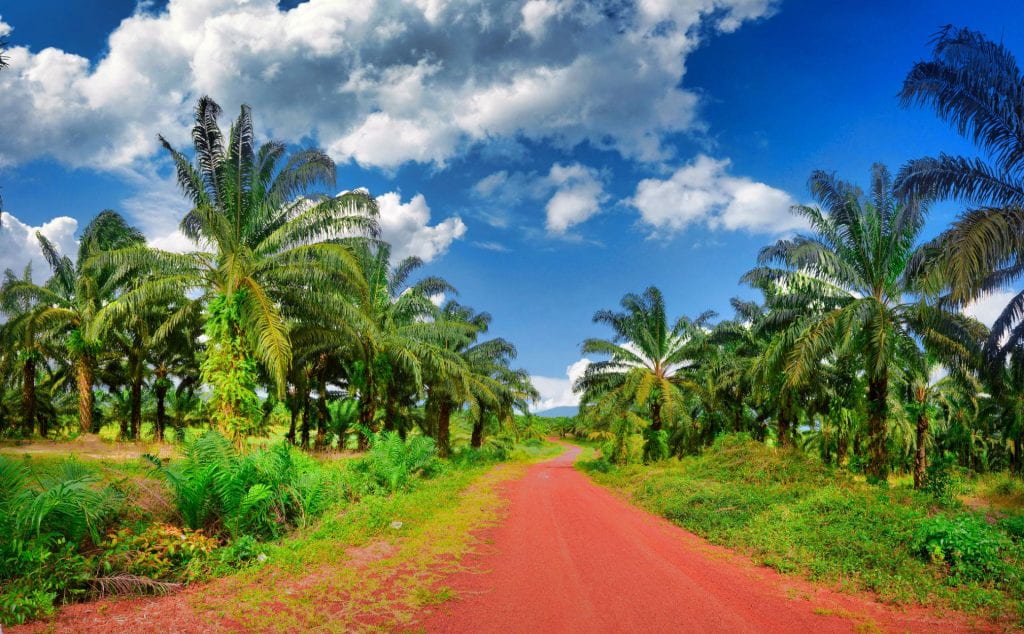Photo by Ben White on Unsplash
The green transition is reshaping our societies, our economies and the international system, writes Jamie Kendrick.
More than a break with extraction and growth, so far it looks like different version of the same pathway that is straining the planet’s limits. Can moving beyond growth help land societies in a more stable future? Olivia Lazard is a fellow at Carnegie Europe and researches the geopolitics of climate-disrupted futures and ecological breakdown. This interview was first published in the Green European Journal and is republished with the author’s permission.
Jamie Kendrick: The European Green Deal is the European Union’s plan to reach net-zero carbon emissions by 2050. What is the material side of Europe’s green transition?
Olivia Lazard: The fact that we’re entering a new industrial energy digitalisation revolution means that we’re increasing our material footprint on the natural world. There’s only so much that a circular economy can rein in if we stick to this logic of growth.
Over the past 10 years, there has been a lot of talk about decoupling economic activities from greenhouse gas emissions. As far as we can see — and there’s been a lot of scientific studies — there are moments when you can decouple economic activities and greenhouse gas emissions, but you can’t do it in the long term, and there are also two larger problems at play.
The first is that the European Union’s claims to be successfully decoupling some of its activities away from greenhouse gas emissions is partly because a lot of the material activities that it depends on are outsourced to countries outside of the EU. Within the carbon accounting, when the EU says we only emit 6 to 7 per cent of global greenhouse gas emissions per year, it is only possible because the EU relies on supply chains in Asia, Africa, Latin America, and the eastern neighbourhood.
The second aspect is that there’s a complete fantasy about the dematerialisation of the economy through digitalisation. Digitalisation requires a huge amount of physical infrastructure with a lot of metals and carbon-intensive infrastructure around steel and concrete. These infrastructures such as the massive underwater cables that connect the internet are again encroaching on ecosystems. Human civilisation is still tearing at the last integrity of ecosystems. We’re coming to the limits. And we don’t know what lies beyond in terms of stability, health and evolution for human systems.

Photo by Josh Olalde on Unsplash
You work on the link between the green transition, conflict and peace. What does the link between growth, extraction and conflict mean for the EU?
Like any energy-intensive economy, the EU relies on exponential extraction. By the nature of its single market and the fact that the EU is largely a service-oriented economy, it outsources the costs of extraction to other economies that use trade and commercial exchanges to climb up the economic growth ladder. In some contexts, extraction is intimately related to violence, elite predation, corruption and illicit financial flows.
The EU is not blind to the problems of extraction. It has developed tools such as supply chain oversight mechanisms. It is currently working on one for critical minerals for example. But regulations can easily be bypassed where there is high demand. Energy-intensive economies tend to ignore those extractive economies, especially highly concentrated ones such as mining, produce political economies that either instrumentalise violence or marginally try to mitigate it to avoid the cost.
Regulatory tools can only superficially mitigate these violent political economies. What is needed instead is either to address them upstream before supply chains get created or organise systemic investments to tackle economic, ecological, governance, social, and financial fragility that truly transform violent political economies around extraction.
Our economic and social systems were built on growth and extraction and the green transition is so far following a similar logic. Is there an alternative relationship with natural systems?
If you look at human history, there are other ways of functioning. Indigenous communities have been shouting this fact at “modernised” peoples and societies for centuries. We know, for example, that the Amazon Basin is not just the result of natural processes and ecological sequencing, it is the result of human stewardship and curating positive interactions between human societies and natural living systems. The relationship between humans and natural living systems remains understood in certain parts of the world as reciprocal. This knowledge is what we need to reacquaint ourselves with in the long term. But it is very difficult to take indigenous civilisations as the starting point compared to how we live in Europe or the US today. That is a fact that we can’t and shouldn’t ignore. What’s at stake for European societies is to land extremely complex and fine socio-economic equilibriums into a space that is mutually reinforcing with complex living systems.
Social welfare systems are key parts of the socio-political DNA of European nations and they rely on employment to generate a tax base. In Europe, that employment depends on macro-economic structures that rely on extraction from elsewhere and commercial exchanges that maintain fine balances with other countries. It’s the principle of globalisation: no country is an island, we all depend on one another, and we all have stakes meshed into interdependencies that define national equilibriums and models of redistribution.
As we seek to transform our relationship with complex living systems by integrating so-called externalities into our economic behaviour, and if we change economic interdependencies, including through demand-reduction or degrowth policies, we have to understand what trade-offs we create and what instability we may generate. For Europeans, a key question is how to re-engage with complex living systems and work towards global climate and economic justice, whilst landing in an economic system that does not break social safety nets in Europe.
Fundamentally, that’s what the degrowth conversation is having difficulty with. If you look at things from a national perspective, then you can have reflections about how to take away certain sectors, move the labour force to another sector, potentially re-skill them and so on. But once you put a national economy in the context of its international ties, the conversation becomes a lot more difficult.
A really good example is the palm oil issue. Malaysia and Indonesia reacted against the EU banning palm oil because it threatens the social equilibriums around palm oil, not because they are against climate action. When the deforestation law was introduced in the EU, it didn’t into account the effects on supply countries, generating instability in partner countries and breaching trust in international relations. Without proper attention to our partners, we will undermine some of the fundamental fabrics that the degrowth movement aims to reconstruct and strengthen, especially in the face of climate disruptions.

Photo by Paul Szewczyk on Unsplash
If degrowth is too much of a rupture but at the same time we know that the logic of growth is destroying vital natural systems, what is the way forward for our economies?
The imaginary of how to regear economies from being extractive to regenerative — ie. not extracting more than the regeneration rates of nature — poses two questions.
First, do we still have the time to regenerate knowing that the climate crisis is so far advanced? Natural resources and ecosystems are already on the move, we’re seeing the change in the migration patterns of birds. State- and nationhood are based on established borders, established natural resource distribution, and imagined identities linked to borders. If they begin to move, it’s going to create a lot of problems. Can we catch a last window of opportunity to sustain certain natural resource distribution patterns the way that they are today through regeneration? Or are we moving into something entirely different and therefore we don’t exactly know how to regenerate?
Second, the fundamental question is not whether degrowth is a desirable outcome in and of itself but whether is degrowth effective and impactful within a regenerative economy and environment at the local, national, regional and international levels. Does degrowth serve the purpose of reducing unnecessary material use and shifting economies towards more localised, circular and bioregional economies that help to feed soils and plant water, meaning regenerate water retention landscapes? Can degrowth regenerate social fabrics and combat other social problems such as epidemics around loneliness, depression and mental health?
All of our political and social systems need to be oriented towards regeneration and the question for degrowth is whether it is part of that.
Has the war in Ukraine revealed a link between Europe’s geopolitical stance and degrowth policies?
The fallout of the war has led to more reflection on resource efficiency. I wouldn’t call it degrowth. Degrowth is more of a political proposition around how to arbitrate between the ethical, economic and social benefits of certain key sectors. This reflection needs to be about more than fighting unemployment crises or doing away with detrimental consumerist behaviours.
True, but the kinds of policies called for by degrowth advocates have entered the window of political acceptability.
That is also true. I’m a French national and it was interesting to observe the presidential campaign last year. I would have expected degrowth to become a keyword in the 2027 presidential campaign but it already happened in 2022. So it is happening. The climate-disrupted futures are calling in a new political spectrum.

